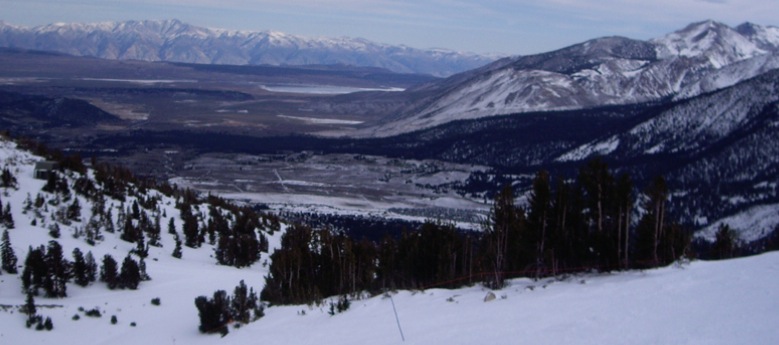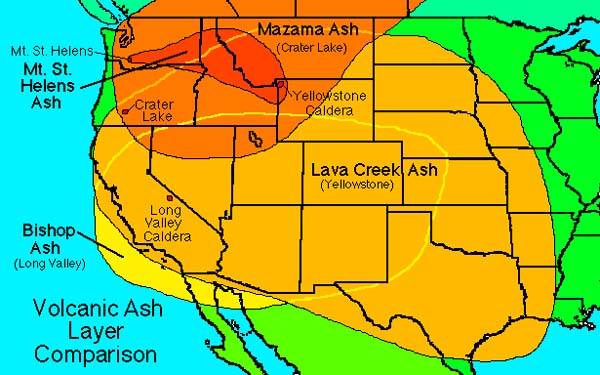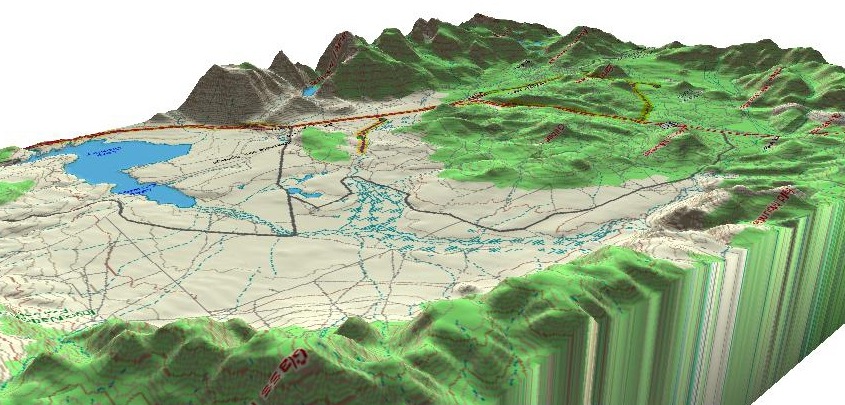
The Long Valley Caldera, created by a volcanic explosion 760,000 years ago
A view of the caldera in winter from Mammoth Mountain looking east to the distant White Mountains from the eastern Sierra Nevada Mountains. The topographical depression referred to as a caldera was caused by this enormous volcanic explosion.
The USGS concludes that: "This geologically recent volcanic activity, together with unrest in Long Valley Caldera that began in 1980 and the frequently felt earthquakes in the region, are reminders the processes that have sculpted the eastern Sierra landscape over the past 4 million years continue today."

The Long Valley caldera explosion, while not the largest extent of volcanic ash, the explosion deposited ash as far east as Kansas and Nebraska, 2000 kilometers away.
The seismically active area today is a source of geothermal electrical power for the state, because the magma is so close to the Earth's surface.
Geologic History of the Long Valley Caldera and Mono - Inyo Craters Volcanic Chain.

USGS map of the caldera positioned to look south by southwest.
Basin and Range Province of the south-west U.S.
The volcanic formation of Mount Lassen, northern California.